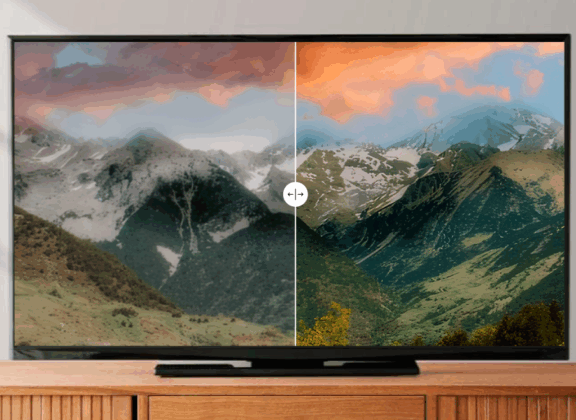Sooner or later, every IPTV user runs into the same issue: the image on screen doesn’t look right. It might turn blurry, pixelate, or freeze right in the middle of a movie. The first instinct is to blame the TV or set-top box — but in most cases, you don’t need to buy new equipment. With a few smart tweaks, you can noticeably enhance your IPTV viewing experience and enjoy better image quality on IPTV channels. Here are five effective strategies.
1. Go Wired for Maximum Stability
Wi-Fi is convenient but not always dependable, especially if the signal has to cut through walls or your router is overloaded. Since IPTV requires a steady speed and low latency, the best move is to plug your Smart TV or media player directly into the router with an Ethernet cable. This eliminates interference, strengthens your IPTV connection stability, and keeps streams running smoothly.
If running a cable isn’t an option, Powerline adapters are a strong alternative. They send data over your home’s electrical wiring and often provide a steadier link than Wi-Fi, making them a reliable tool for fixing buffering issues in IPTV.
2. Pick the Right Player or App
Streaming quality isn’t only about your internet speed. The app you use to play IPTV streams makes a big difference. Some players can’t handle adaptive quality or proper buffering. Switching to options like TiviMate, IPTV Smarters, Perfect Player, or OTT Navigator can improve performance.
Spend a few minutes customizing settings: select the right video decoder (ExoPlayer or Hardware), turn on auto-quality adjustments, and fine-tune the buffer size. These changes often resolve playback hiccups and deliver smooth IPTV service without interruptions.
3. Fine-Tune Your TV’s Image Settings
Even the best player won’t help if your TV picture mode is poorly set up. Many TVs ship with factory presets like “Eco Mode” or overly bright profiles that flatten or wash out the picture.
Go into your image settings menu and switch to Cinema, Neutral, or a custom profile. Adjust sharpness, contrast, and color temperature until the video clarity feels balanced. This step is especially valuable on budget TVs, where default presets are rarely optimal.
4. Verify Playlist Quality
Sometimes poor visuals aren’t due to your device, but to the source content itself. If you rely on third-party IPTV playlists, check that the channels are available in HD or Full HD and not just SD. Also pay attention to bitrate: higher bitrate usually means sharper images but requires more bandwidth.
A good IPTV provider ensures HD IPTV channel quality, adaptive streaming, and stable sources. If your current playlist often drops to low resolution or suffers from lag, it may be time to switch to a better service.
5. Keep Everything Up to Date
One of the simplest fixes is also the most overlooked: updates. Manufacturers regularly release firmware updates and app patches that fix bugs, improve codec support, and optimize streaming quality.
Check for updates on your set-top box, Smart TV, or IPTV app. For Android TV and Google TV, updates sometimes require manual confirmation, so don’t ignore those prompts. Updated software can directly improve decoders and playback stability, leading to more uninterrupted viewing.
Poor IPTV picture quality doesn’t necessarily mean your hardware has reached the end of its life. Most of the time, a combination of network optimization, app tuning, and system updates will do the trick. IPTV is a flexible system, and with a little effort, you can achieve a crisp, stable picture — even on budget equipment. Follow these stable IPTV connection tips, and your streaming experience will be sharper, smoother, and far more enjoyable.
